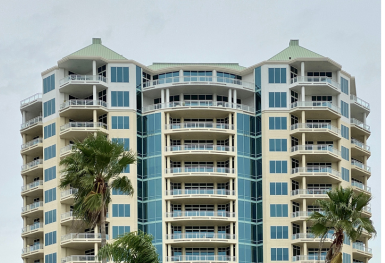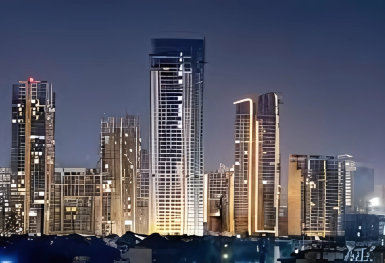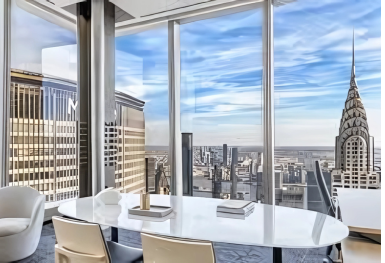08 Apr 2025
Gurgaon, now a bustling metropolis and one of India’s foremost real estate hubs, has undergone a remarkable transformation over the past few decades. From being a sleepy industrial town to a thriving urban center, the evolution of Gurgaon mirrors the rapid economic and infrastructural growth that India has witnessed since the 1990s. In this blog, we’ll take a closer look at how Gurgaon emerged from obscurity and became the real estate powerhouse it is today.
The Early Beginnings
Historically, Gurgaon was a small town located just southwest of Delhi. Its early identity was shaped around agriculture and industry, with a focus on textile manufacturing, dairy farming, and other local industries. The town’s proximity to Delhi made it a strategic location for businesses, but its potential was largely underutilized. It was not a destination for large-scale investments, and the real estate market was primarily centered around small plots of land for local use.
In the late 20th century, the town was mainly known for its traditional economy, which did not draw much attention from large corporate or real estate developers. However, the Indian economy’s shift towards liberalization in the 1990s would set the stage for dramatic change in Gurgaon’s fortunes.
The 1990s
The turning point for Gurgaon came in the early 1990s, when the Indian government began to open up the economy. The liberalization policies, which included easing foreign investment restrictions and promoting economic reforms, created the perfect environment for businesses to flourish. Gurgaon, being close to the national capital, Delhi, had a distinct advantage in terms of location. It became an attractive destination for multinational corporations (MNCs) seeking proximity to Delhi, with better land availability and lower operational costs than in the capital itself.
The arrival of major IT and outsourcing companies, such as Infosys, Wipro, and American Express, was a game-changer for Gurgaon’s real estate. These companies needed large office spaces for their operations, leading to a surge in demand for commercial properties. This, in turn, triggered the development of modern office complexes, shopping malls, and residential spaces to accommodate the growing workforce.
The 2000s
By the early 2000s, Gurgaon had firmly established itself as a key business and residential district. The Haryana Urban Development Authority (HUDA) and private developers worked together to transform the region into a modern, cosmopolitan city. Land that was previously underdeveloped began to be converted into commercial and residential zones, and the construction of high-rise buildings and skyscrapers became a common sight.
The real estate boom during this period was fueled by several factors. First, there was a growing demand for residential properties from professionals working in the booming corporate sector. With rising incomes and aspirations, more people sought modern apartments with amenities such as gymnasiums, swimming pools, and landscaped gardens. At the same time, investors flocked to Gurgaon, attracted by the potential for high returns in the growing real estate market.
In addition to residential and commercial developments, infrastructure projects such as the Gurgaon Expressway (NH-8), the metro connectivity, and improved transportation links made the city even more attractive. The rapid expansion of these infrastructure projects facilitated the influx of residents and businesses into Gurgaon, leading to further urbanization.
2010s to Present
By the 2010s, Gurgaon had truly evolved into a city of global significance. The once industrial town had now become a key node in India’s real estate landscape, with a diverse range of residential options, commercial office spaces, and retail developments. Several world-class housing projects, such as DLF Cyber City, Golf Course Road, and Sector 57, became landmarks of luxury living and premium commercial office spaces.
In addition to commercial and residential properties, Gurgaon’s retail real estate market also saw exponential growth. The city became home to large malls, luxury retail outlets, and entertainment complexes, attracting both domestic and international brands. The rise of serviced apartments, luxury villas, and gated communities also catered to a growing urban population with high-income levels.
As the city grew, it became an epicenter for not only the IT and corporate sectors but also for industries like manufacturing, hospitality, and healthcare. Today, Gurgaon is home to some of the biggest multinational companies, making it an attractive destination for investment and business expansion.
The Future
Looking forward, the real estate market in Gurgaon is poised to continue evolving. The Haryana government's focus on improving infrastructure, including the development of the Delhi-Mumbai Industrial Corridor and the expansion of the metro network, will further enhance Gurgaon’s connectivity and growth prospects.
Additionally, Gurgaon’s transition into a "smart city" with a focus on technology, sustainability, and digital infrastructure is expected to drive demand for tech-integrated homes, energy-efficient buildings, and futuristic urban planning. Real estate developers are also exploring projects that cater to the millennial population, with a greater emphasis on co-living spaces and integrated community developments.
Gurgaon’s transformation from a small industrial town to a real estate powerhouse is a testament to the power of strategic urban planning, infrastructure development, and market demand. Today, the city stands as a symbol of rapid growth, modernity, and economic prosperity. As India continues to urbanize, Gurgaon’s real estate market is set to remain a key player in shaping the country's urban landscape. For investors, homebuyers, and businesses alike, Gurgaon remains a dynamic and promising destination.








